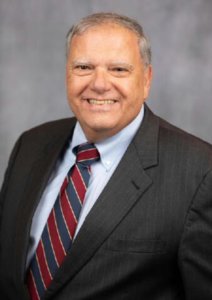Traffic Safety in Today’s World
What do we know, what do we see and what must we do?
“traffic safety IS public safety”
Assistant Chief William P. Georges, Ret.
Albany, New York Police Department
Chair, Traffic Safety Committee
New York State Association of Chiefs of Police
Member, IACP Highway Safety Committee
Clearly we know that several factors, including but not limited to, the Covid pandemic, calls to defund/decrease police services and personnel shortages have taken its toll on traffic safety especially in the area of enforcement. This is not said as a criticism but merely as an understandable outcome of the events of today’s world.
So with that said, what do we in law enforcement see as a result? Traffic enforcement has decreased, hazardous moving violations and impaired driving have increased and crashes, especially fatalities have also increased. We know this not only because the data clearly shows this but also because of what we are routinely seeing on our roadways. How many times when you are driving in your personal vehicle do you see multiple violations of speeding and other hazardous violations that contribute to crashes? Despite the good work that we all do, we must now reinvigorate our mission to save lives by keeping our roadways safe.
I realize if you are reading this piece, and subscribe to the excellent resources which MADD provides, I am truly “preaching to the choir”. As with you, the New York State Association of Chiefs of Police (NYSACOP) believes traffic safety engagement (enforcement, public information and education and liaison with engineering and EMS) must be a pillar of an agency’s policing model. In an effort towards ensuring we accomplish that important mission, I would like to share some of our initiatives.
So what must we do? First we must firmly believe, and communicate to the public, that traffic safety is public safety! Traffic safety engagement by both law enforcement, and the community they serve, produces long-term positive impact by reducing harm and improving quality of life, preventing and reducing crime, and enhancing outreach and community service to the public.
Next, the formula for success: Training – Culture – Leadership.
Training: Do not overlook fundamental training of our personnel in the following areas:
- Safe and proper traffic stop techniques.
- Effective communication and de-escalation skills.
- Take full advantage of ongoing traffic safety training provided by your State Governor’s Highway Safety Office, and other state agencies, NHTSA, IACP and other training institutions/organizations.
- Special focus should be given to impaired driving training such as SFST, ARIDE and Drug Recognition Experts.
Culture:
- While officer safety is critically important, we must ensure that our personnel treat motorists stopped for a violation both fairly and professionally.
- We often hear the term “equity” as it applies to enforcement and that is critically important. We must constantly strive and properly supervise personnel to ensure that we always provide fair and balanced policing.
- Why do we do traffic enforcement? It should never be about tickets or revenue but instead about terminating the offense and educating the offender. Of course what enforcement measure is ultimately taken is based on the offense and other factors determined by the law enforcement officer. At the end of the day, our mission is to save lives and keep our communities safe.
Leadership:
- Law enforcement management teams must communicate to their personnel that traffic safety is important and produces positive outcomes for the community.
- Use data-driven analysis to ensure effective deployment of resources. While traffic offenses happen everywhere, analyze crash data to determine where enforcement is needed most.
- Traffic stops should always be based on observing a vehicle and traffic law violation, erratic driving (which usually includes a violation) and/or legitimate police information based on a vehicle description.
- In many instances as a result of a traffic stop, criminal activity (possession of firearms, drugs, wanted persons, etc.) is discovered. Many good arrests are made in this scenario however, a traffic stop should not be conducted solely as an excuse for a potential criminal investigation/interrogation.
These principles guide NYSACOP members and their agencies in providing fair and balanced traffic safety services. Traffic safety is public safety and recent surveys have shown that a majority of the public supports our efforts. We in law enforcement must continue our efforts to ultimately accomplish zero deaths on our roadways. Alcohol, drug and poly-substance impaired driving is one of the most important hazards that we see. What we can do is ensure that our efforts are working towards the ultimate goal that I know we all share…saving lives and reducing the tragedies that victims must endure.
Let me end by thanking MADD and other allied organizations for their continued support of law enforcement. For further information and/or assistance, the NYSACOP traffic safety team can be contacted via e-mail at [email protected]. To all law enforcement personnel, thank you for all you do and stay safe!
Editors note: In 1995, Assistant Chief Georges was the recipient of MADD’s National Law Enforcement Award for his work on New York State’s Project Zero initiative.



